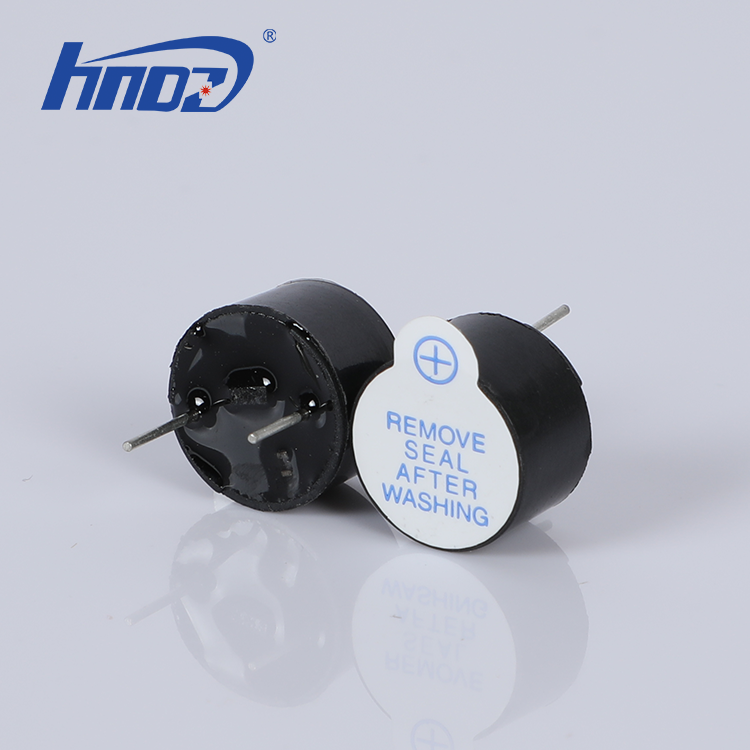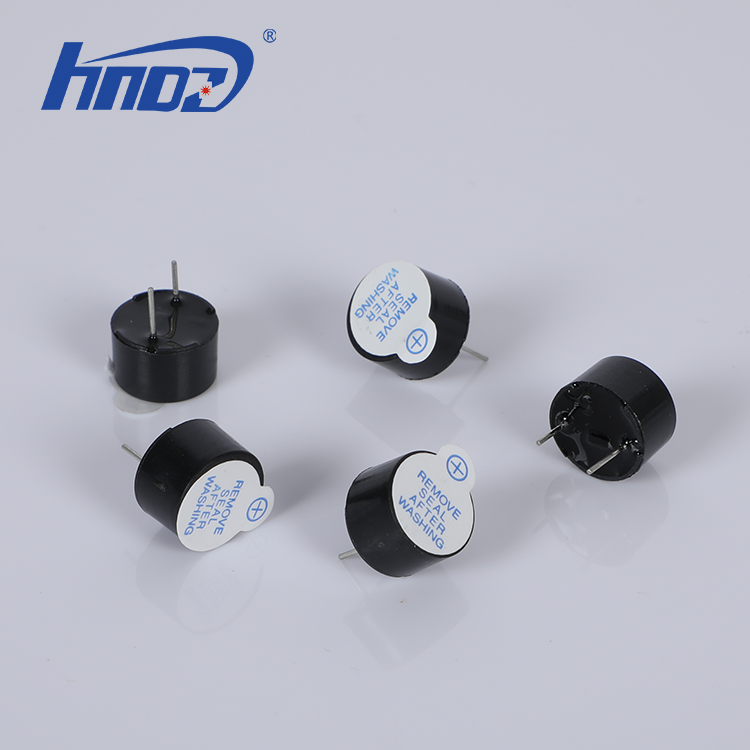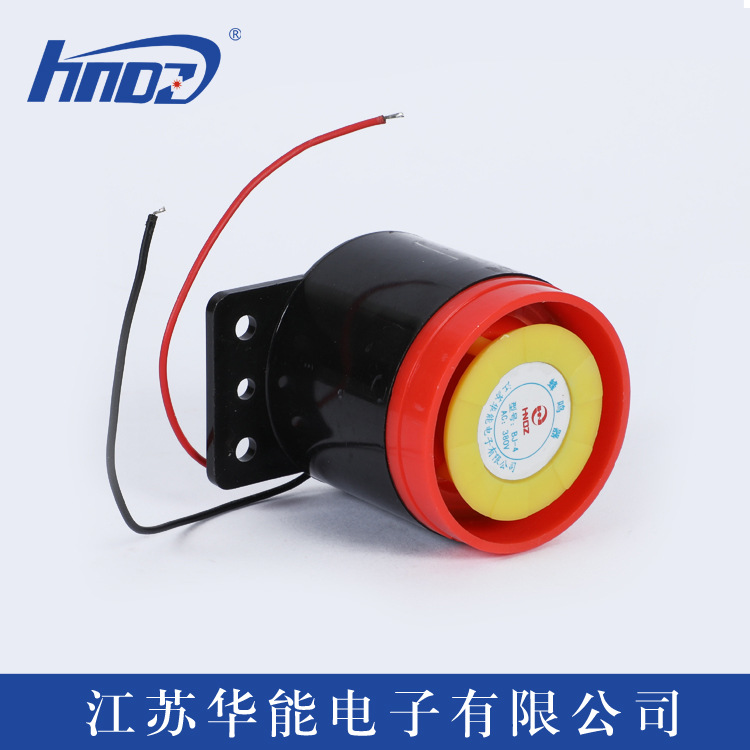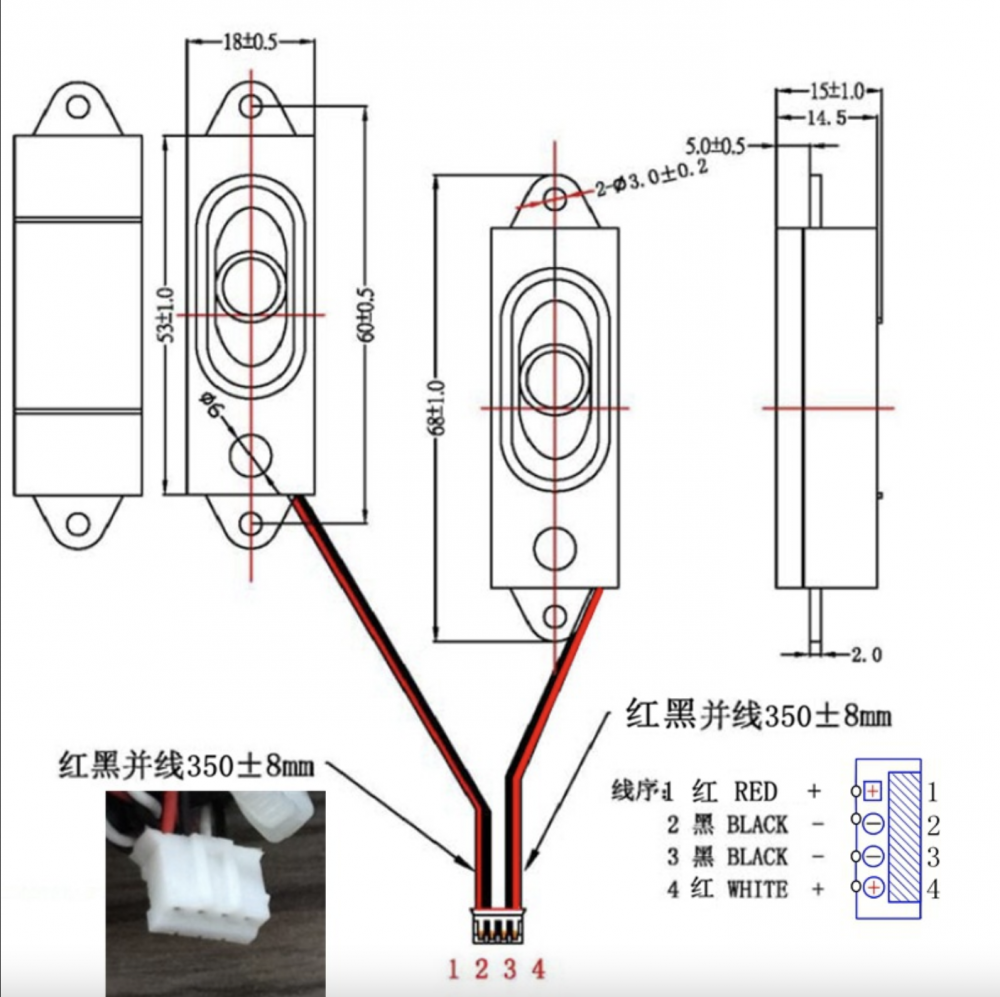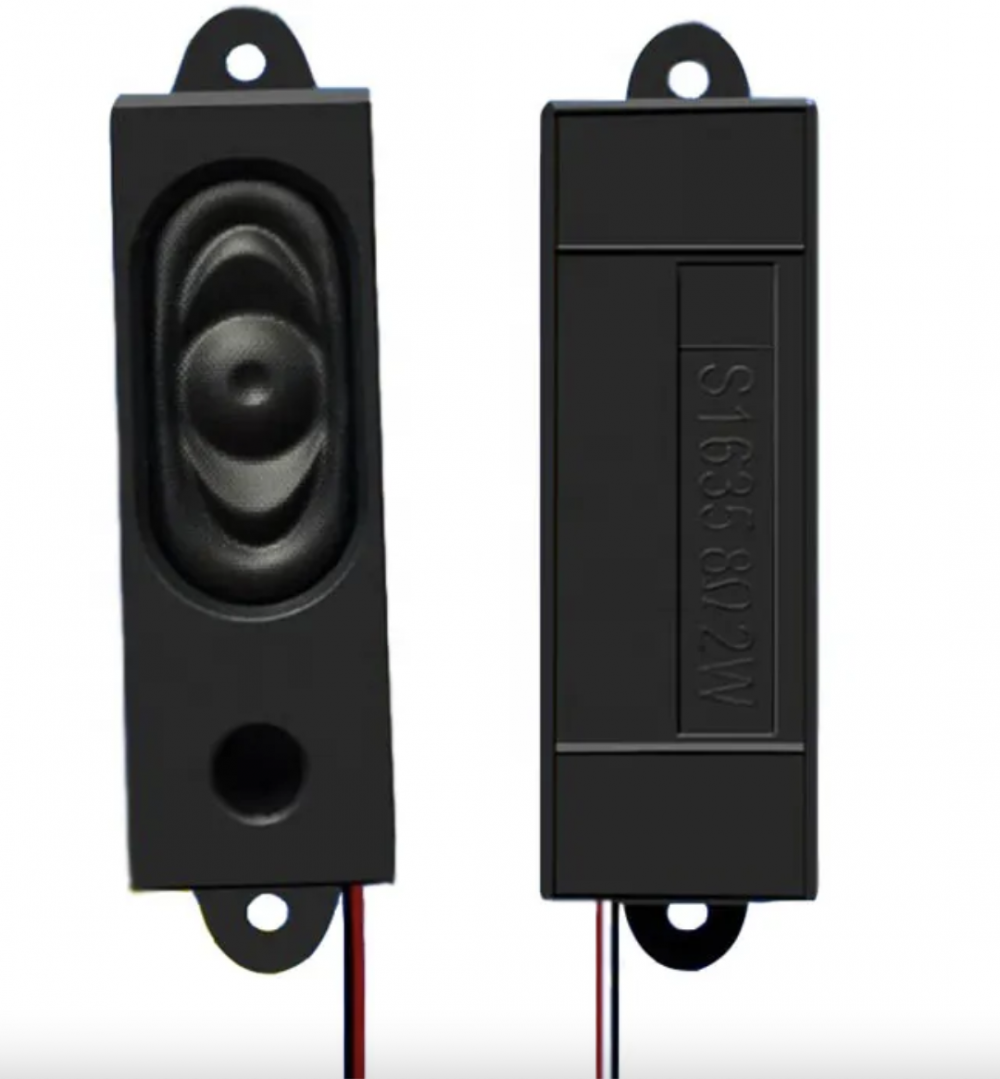SMD Magnetic Buzzers are electronic components that produce sound using a magnetic field. These buzzers consist of a coil, a magnet, a diaphragm, and a housing.
SMD Magnetic Buzzers are widely used in various applications, including alarm systems, electronic devices, automotive electronics, and communication devices. They are known for their compact size, low power consumption, and reliability.
It is important to note that SMD Magnetic Buzzers are polarized components, meaning they have a positive and negative terminal. It is crucial to connect them correctly to the power source to ensure proper operation.
In conclusion, SMD Magnetic Buzzers work by utilizing a magnetic field to vibrate a diaphragm, which produces sound waves. By controlling the electrical current supplied to the coil, the frequency and volume of the sound output can be adjusted. These compact and reliable components find widespread use in various applications that require audible alerts or notifications.
2. What applications is it suitable for? SMD Magnetic Buzzers are versatile components that find applications in various industries and sectors. Here are some common applications where SMD Magnetic Buzzers are suitable:
Alarm Systems: SMD Magnetic Buzzers are commonly used in alarm systems to provide audible alerts. They are found in security systems, fire alarms, burglar alarms, and other safety devices where a loud and attention-grabbing sound is required to notify individuals of potential dangers or emergencies.
Electronics: SMD Magnetic Buzzers are widely used in electronic devices to provide audible feedback or notifications. They can be found in consumer electronics such as mobile phones, tablets, computers, and appliances, where they alert users about incoming calls, messages, or notifications.
Automotive Electronics: SMD Magnetic Buzzers are commonly integrated into automotive electronics to provide audio signals for various purposes. They can be used in car alarms, reverse parking sensors, seatbelt reminders, and other safety systems to alert drivers and passengers about potential risks or to indicate the status of certain functions.
Communication Devices: SMD Magnetic Buzzers are suitable for use in communication devices such as telephones, intercom systems, and walkie-talkies. They provide audible signals for incoming calls, message notifications, or to indicate the status of the device.
Industrial Equipment: SMD Magnetic Buzzers are often utilized in industrial equipment and machinery to provide audible signals or alerts. They can be found in production lines, manufacturing systems, and control panels to indicate the completion of a process, signal an error, or alert operators about critical conditions.
Medical Devices: SMD Magnetic Buzzers can be found in medical devices and equipment where audible alerts are necessary. They are used in patient monitoring systems, medical alarms, and diagnostic equipment to notify healthcare professionals about critical situations or abnormal conditions.
Home Appliances: SMD Magnetic Buzzers are integrated into various home appliances such as washing machines, dishwashers, and microwave ovens to provide audible notifications for different functions or to alert users about the completion of a task.
IoT Devices: With the rise of the Internet of Things (IoT), SMD Magnetic Buzzers are increasingly used in IoT devices to provide audible notifications or alerts. They can be found in smart home systems, wearable devices, and other connected devices to notify users about various events or to indicate the status of a device or system.
In summary, SMD Magnetic Buzzers have a wide range of applications and are suitable for use in alarm systems, electronics, automotive electronics, communication devices, industrial equipment, medical devices, home appliances, and IoT devices. Their compact size, low power consumption, and reliable performance make them a popular choice in many industries.
3. What are the advantages and disadvantages? SMD Magnetic Buzzers offer several advantages and disadvantages. Here are some key points to consider:
Advantages:
Compact Size: SMD Magnetic Buzzers are small in size, making them ideal for applications where space is limited. Their compact design allows for easy integration into various electronic devices and systems.
Low Power Consumption: These buzzers are known for their efficient power usage. They consume minimal power, which is beneficial for battery-operated devices and those requiring energy-efficient solutions.
Reliable Performance: SMD Magnetic Buzzers are highly reliable and have a long operational life. They are designed to withstand harsh environmental conditions, mechanical stress, and temperature extremes, ensuring consistent performance over time.
Audible Sound Output: These buzzers produce a loud and attention-grabbing sound, making them suitable for applications where audible alerts or notifications are required. They provide clear and distinct audio signals even in noisy environments.
Easy Integration: SMD Magnetic Buzzers are designed for surface mounting, allowing for easy and convenient integration into PCBs (Printed Circuit Boards). This streamlined integration process helps manufacturers save time and effort during production.
Disadvantages:
Limited Frequency Range: SMD Magnetic Buzzers typically have a limited frequency range compared to other types of buzzers. This limitation may restrict their use in applications requiring specific frequency outputs.
Single Tone Output: Most SMD Magnetic Buzzers produce a single tone sound. While this is suitable for many applications, it may not be ideal for situations where multiple or varying tones are needed.
Polarized Component: SMD Magnetic Buzzers are polarized, meaning they have positive and negative terminals. Care must be taken during installation to ensure proper polarity connection. Incorrect polarity connection can result in the buzzer not functioning or producing a diminished sound output.
Limited Sound Control: Unlike some other types of buzzers, SMD Magnetic Buzzers have limited sound control options. Adjusting the volume or tone of the buzzer may not be as straightforward as with other types of audio devices.
In conclusion, SMD Magnetic Buzzers offer compact size, low power consumption, reliable performance, and audible sound output. However, they have some limitations, including a limited frequency range, single tone output, polarized nature, and limited sound control options. These factors should be considered when selecting an SMD
Magnetic Buzzer for a specific application.
4. What are the installation and usage methods? Here's a description of the installation and usage methods for SMD Magnetic Buzzers:
Installation:
Preparation: Before starting the installation, ensure that you have the necessary tools and equipment, including a soldering iron, solder wire, flux, and a PCB (Printed Circuit Board) where the buzzer will be mounted.
Placement: Determine the desired location on the PCB where the SMD Magnetic Buzzer will be installed. Ensure that there is enough space and proper clearance for the buzzer.
Polarity: Identify the polarity of the buzzer. Typically, SMD Magnetic Buzzers have two terminals, a positive (+) and a negative (-). The positive terminal is usually marked with a plus sign or a dot. Ensure that you align the polarity correctly for proper functionality.
Soldering: Apply a small amount of flux to the PCB pads where the buzzer will be soldered. Place the buzzer on the designated pads, aligning the polarity correctly. Heat the soldering iron and melt a small amount of solder wire onto the pads to create a secure connection between the buzzer and the PCB. Be careful not to apply excessive heat or solder to avoid damaging the buzzer or the PCB.
Inspection: After soldering, visually inspect the connections to ensure that they are secure and there are no bridged or cold solder joints. Use a multimeter, if necessary, to check for continuity between the buzzer terminals and the PCB pads.
Usage:
Power Supply: Connect the positive terminal of the SMD Magnetic Buzzer to the positive (+) terminal of the power supply and the negative terminal to the negative (-) terminal. Ensure that the voltage supplied is within the specified operating range of the buzzer.
Driving Circuit: Depending on the specific requirements of your application, you may need to connect the SMD Magnetic Buzzer to a driving circuit. This circuit can control the frequency, duration, and intensity of the sound produced by the buzzer.
Sound Control: Some SMD Magnetic Buzzers have built-in sound control options, allowing you to adjust the volume or tone. Consult the datasheet or manufacturer's instructions to understand the specific control mechanisms available for your buzzer.
Testing: Once the buzzer is connected to the power supply and any required driving circuit, test its functionality by supplying power or activating the driving circuit. Confirm that the buzzer produces the desired sound output and performs as expected.
Precautions: Handle the SMD Magnetic Buzzer with care to avoid damaging the delicate diaphragm or other components. Ensure that the buzzer is not subjected to excessive mechanical stress or pressure, as this can affect its performance or lead to premature failure.
In summary, to install an SMD Magnetic Buzzer, you need to solder it onto the designated PCB pads, paying attention to polarity. For usage, connect the buzzer to the power supply and, if necessary, to a driving circuit for sound control. Test the functionality and handle the buzzer with care to maintain its performance.
5. What should be paid attention to in maintenance and upkeep? Maintaining and keeping up with the maintenance of SMD Magnetic Buzzers is essential to ensure their optimal performance and longevity. Here are some key points to consider:
Regular Inspection: Perform regular visual inspections of the buzzers to check for any damage, loose connections, or signs of wear. Look for any cracks, broken wires, or bent pins. If any issues are identified, address them promptly.
Cleaning: Keep the buzzers clean to prevent any buildup of dirt, dust, or debris that could affect their performance. Use a soft, dry cloth or a small brush to gently remove any particles from the surface of the buzzers. Avoid using harsh chemicals or abrasive materials that could damage the components.
Environmental Considerations: SMD Magnetic Buzzers are designed to operate within specific temperature and humidity ranges. Ensure that the operating conditions are within the specified limits to prevent any adverse effects on the buzzers' performance. Avoid exposing the buzzers to extreme temperatures, moisture, or excessive vibration.
Proper Handling: Handle the buzzers with care to avoid any mechanical stress or damage. Avoid applying excessive pressure on the diaphragm or other delicate components. When soldering or desoldering, use appropriate techniques and tools to prevent overheating or damaging the buzzers.
Power Supply: Ensure that the voltage supplied to the buzzers is within the specified operating range. Using voltages outside the recommended range can result in malfunction or damage to the buzzers. Consider using voltage regulators or surge protectors to stabilize the power supply and protect the buzzers from voltage spikes.
Documentation and Recordkeeping: Maintain a record of the installation date, specifications, and any maintenance or repairs performed on the buzzers. This documentation can help track their performance over time and identify any recurring issues.
Replacement: If a buzzer shows signs of failure or does not function properly despite maintenance efforts, consider replacing it with a new one. Regularly check with the manufacturer or supplier for any updates or improved versions of the buzzers that may better suit your application.
In conclusion, maintaining SMD Magnetic Buzzers involves regular inspections, proper cleaning, ensuring suitable operating conditions, careful handling, monitoring the power supply, and keeping documentation. By following these guidelines, you can maximize the performance and lifespan of the buzzers in your applications.
6. How long is the lifespan? The lifespan of SMD Magnetic Buzzers can vary depending on various factors such as usage, operating conditions, and quality. Generally, these buzzers are designed to have a long lifespan, ensuring reliable performance over an extended period. However, it's important to note that the exact lifespan of a specific SMD Magnetic Buzzer may vary.
Factors Affecting Lifespan:
Quality: The quality of the buzzer plays a significant role in determining its lifespan. Higher quality buzzers, typically manufactured by reputable companies, tend to have a longer lifespan compared to lower quality alternatives.
Operating Conditions: The operating conditions in which the buzzer is used can impact its lifespan. Factors such as temperature extremes, high humidity, excessive vibration, or exposure to corrosive substances can shorten the lifespan of the buzzer.
Usage: The frequency and intensity of usage also have an impact on the lifespan of the buzzer. Continuous and heavy usage can put more strain on the components, potentially reducing its lifespan.
Maintenance: Proper maintenance, including regular inspection, cleaning, and addressing any issues promptly, can help prolong the lifespan of the buzzer. Neglecting maintenance can lead to premature failure or reduced performance.
Estimated Lifespan:
While it is challenging to provide an exact lifespan for SMD Magnetic Buzzers, they are generally designed to last for thousands or even tens of thousands of hours of continuous operation. Some high-quality buzzers may have a rated lifespan mentioned by the manufacturer, which can give you an estimation of their durability.
To maximize the lifespan of SMD Magnetic Buzzers, it is recommended to follow the manufacturer's guidelines regarding operating conditions, usage, and maintenance. Proper handling, avoiding excessive stress or pressure on the components, and providing a stable power supply within the specified operating range can also contribute to extending the lifespan.
In conclusion, SMD Magnetic Buzzers are designed to have a long lifespan, but the actual duration can vary based on usage, operating conditions, and quality. By following proper usage and maintenance practices, you can ensure that the buzzers perform reliably for an extended period in your applications.
Jiangsu Huawha Electronics Co., Ltd. was founded in 1999 and has devoted in the acoustic field for more than 20 years. The factory is located in Jiangsu province, and has about 72,000 sq.ft. There are about 200-300 employees including more than 20 professional and experienced engineers. The company is a reliable, well-developed and professional manufacturer of electronic acoustic products, providing electromagnetic buzzers, piezoelectric buzzers, speakers, alarms and so on.


